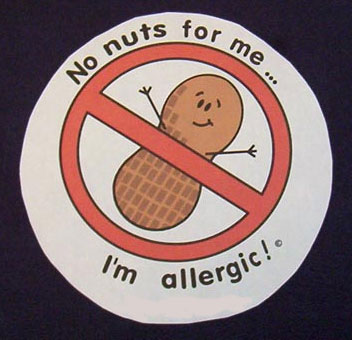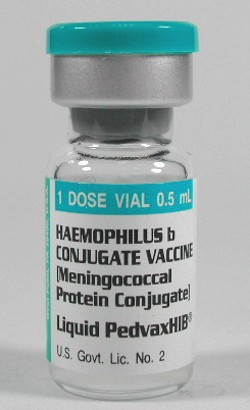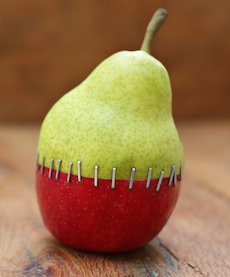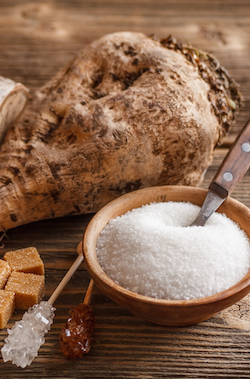
Mitochondria
Would you like to potentially add 9 years to your life expectancy? That's what research on the nutrient
coenzyme Q10 (CoQ10) implies is possible.
1
CoQ10 is well known for its heart and vascular health benefits.
2 By helping the cellular powerhouses known as
mitochondria burn fuel more effectively, CoQ10 is able to protect not only the heart but
every cell in your body.
3
That's why scientists are growing increasingly fascinated with the role of CoQ10 in tissues beyond the cardiovascular system.
2 There is evidence for CoQ10's protective effects in the brain and nervous system, in asthma and chronic lung disease, in diabetes and the metabolic syndrome, on ocular health, and even on the aging immune system.
Most excitingly, there's early support for the idea that CoQ10 supplementation can extend the life span of both primitive animals and mammals, laying the groundwork for a similar pro-longevity effect in humans.
CoQ10 Extends Life Span
According to the
mitochondrial theory of aging, oxidant damage to the mitochondria is at the root of aging itself.
4 Simply put, the more oxidative damage to mitochondria, the shorter the life span of the individual.
5,6
Therefore, if we can make mitochondria burn energy more cleanly and efficiently, we can decelerate the aging process. That would mean not only longer life, but a healthier one.
CoQ10 is an essential component of the mitochondrial energy transfer system. When CoQ10 levels fall, mitochondrial dysfunction skyrockets, and aging is accelerated.
5
However, when CoQ10 is added back to ailing or aging mitochondria, their function rebounds. Studies show that when supplemented with CoQ10, older worms in the species
C. elegans experience a slowing down of the aging process and an extended life span.
7
Even studies that don't show life span extension demonstrate a return to youthful behaviors and functions in response to CoQ10 supplementation.
8
These benefits aren't restricted to primitive invertebrates, however. Research demonstrates that mice supplemented with CoQ10 live longer. In one case, supplemented animals experienced an
11.7% increase in mean life span, and a
24% increase in maximum life span.
1 That increase translates into the equivalent of humans gaining over
9 years, based on today's life expectancy of
78.5 years.
9
The benefits of CoQ10 supplementation in mice aren't restricted solely to extending the quantity of life, however. Lifelong dietary supplementation with CoQ10 decreased objective measures of aging even in middle-aged animals.
10
CoQ10 appears to achieve these exceptional effects through a multi-targeted set of mechanisms.
It is now evident that CoQ10 directly influences the expression of multiple genes involved in aging, especially those regulating inflammation.
11-13 This so-called "epigenetic" effect is at the very forefront of scientific attempts to understand how environmental factors such as nutrition influence our genetic load.
Taken all together, CoQ10's antioxidant, anti-inflammatory, and epigenetic mechanisms combine to offer remarkable protection for a host of body systems, especially those hit hardest by mitochondrial aging.
CoQ10 Preserves Brain Structure, Slows Neurodegeneration
Mitochondrial dysfunction from chronic oxidation and the resulting chronic inflammation are a root cause of neurodegenerative conditions like Alzheimer's, Parkinson's, Huntington's, and ALS (Lou Gehrig's disease).
6,14-18
CoQ10 is attracting ever-increasing attention as scientists look for a way to prevent these diseases and treat their causes, rather than simply treating symptoms, which is the best that current medicine can offer.
17,19
Alzheimer's disease is the largest cause of dementia among Americans, estimated to affect more than
5 million people; it is the sixth leading cause of death.
20 While many factors contribute to risk for Alzheimer's, age and oxidant stress in the brain are major contributors to this disease.
15,16,21 Accumulated oxidant stress leads to production and deposition of an abnormal protein called
amyloid β
-peptide, which is itself a trigger for more oxidation and inflammation.
21
Eventually, brain cells overwhelmed by
amyloid β
-peptide lose their function and die, producing the loss of memory, cognition, and physical function we associate with the disease.
CoQ10 shows great promise in laboratory and animal studies of Alzheimer's disease. By slowing oxidant damage, CoQ10 is proven to reduce deposition of destructive
amyloid β
-peptide proteins in brain cells.
22 It reduces the
amyloid β
-peptide-induced oxidation that contributes to the vicious cycle of oxidation-inflammation-oxidation that accelerates the disease process.
23 Finally, and perhaps most importantly, CoQ10 added to
amyloid β
-peptide-afflicted brain cells causes the destructive protein to become destabilized and weakened even after it is formed.
24 This unique CoQ10 mechanism has the potential for reversing Alzheimer's disease at the molecular level.
Animal studies demonstrate reduced oxidative stress and
amyloid β
-peptide deposition when CoQ10 is added to feed.
22,25-27 CoQ10 supplementation in such animals improves cognitive performance and memory both with CoQ10 alone and when vitamin E is added.
28,29 These studies provide a useful model of what recovery from Alzheimer's disease might look like in humans.
Human patients with Alzheimer's disease are known to have lower levels of reduced CoQ10 in their spinal fluid, an indication of the intense oxidant stress in their brains.
30
CoQ10 and Parkinson's Disease
Parkinson's disease is the second most common aging-related disorder in the world.
31 Like Alzheimer's, it is the result of oxidant stress triggering production of an abnormal, inflammatory protein.
32-34 In Parkinson's the protein is called
alpha-synuclein, which damages neurons in regions of the brain that control motor function as well as cognition.
33,34 Symptoms include slowed movements, weakness, cognitive impairment, and eventually dementia.
31
CoQ10 is showing real promise in human studies of Parkinson's disease.
18 Unlike current treatments, which improve symptoms without changing disease progression, CoQ10 may fundamentally alter and slow the otherwise inevitable decline of patients with Parkinson's.
33
For example, animal studies have shown that CoQ10 significantly reduces damage to neurons in the brain areas affected by Parkinson's disease after the animals were exposed to a pesticide that has been associated with Parkinson's development in humans.
33,35
CoQ10 at doses of
300 to
1,200 mg/day have been used in clinical research, though up to
2,400 mg/day is well tolerated.
36 In studies using the higher doses, improvements on several Parkinson's disease rating scales have been observed.
32,37 In one important study,
1,200 mg/day produced substantial slowing of disease progression compared with placebo.
37
A 2011 meta-analysis (a large study combining data from smaller trials) concluded that
1,200 mg/day of CoQ10 was well-tolerated by Parkinson's disease patients, and provided significant improvement on numerous measures of disease severity and progression.
38
CoQ10 Preserves Brain Function, Fights Migraine, Mental Illness
CoQ10 is essential not only in preventing brain structural deterioration, but in maintaining normal function at all ages. Studies are revealing some startling associations in two areas of brain function in particular: migraine headaches and common mental health problems such as depression and schizophrenia.
Migraine headaches occur in an estimated
8.7 million women and
2.6 million men in the United States producing moderate to severe disability. More than
3 million women and
1 million men are estimated to suffer 1 or more attacks/month.
39,40
The exact chain of events leading up to a migraine is unclear, but it may be related to brain energy levels, as indicated by low CoQ10 levels in people with migraines (almost
33% of a population with migraine had levels below the standard in one study).
41 Studies of CoQ10 supplementation in children, adolescents, and adults show substantial decreases in the frequency of migraine episodes, number of days with migraine symptoms, headache disability, and frequency of nausea, a common feature of migraines.
41-43
CoQ10 is so effective in managing migraine headaches that it is now listed among the 11 most effective "
drugs" for preventing migraines by the Canadian Headache Society.
44
Major depression, bipolar disorder, and schizophrenia, long considered separate entities, are now recognized as having common roots in
mitochondrial dysfunction and elevated brain oxidative stress levels.
45,46 People with these conditions have higher markers of oxidant damage and lower cellular antioxidant levels than do healthy controls, and CoQ10 is typically lower than normal.
45,47 In one study,
51.4% of depressed patients' CoQ10 levels fell below the lowest values in control subjects.
48
CoQ10 deficiency is particularly marked in people whose depression responds poorly to medication, a possible indication that the deficiency needs to be corrected in order for prescription meds to work.
48
A major breakthrough in our understanding of the causes of mental illness came in 2011 and 2012, when researchers discovered that oxidative and other related stresses in the brain were capable of creating new molecular configurations that triggered an autoimmune response in the brains of people with depression and schizophrenia.
45,49,50
Restoring natural levels of antioxidants such as CoQ10 is therefore an attractive approach in these conditions. One study of depression in older adults with bipolar disorder found a significant reduction in symptom severity during treatment with CoQ10 at
1,200 mg/day.
51
The
ubiquinol form of CoQ10 is far better
absorbed, so a much lower dose, perhaps around
400 mg/day of
ubiquinol should provide benefits seen when much higher doses of the more common
ubiquinone form of CoQ10 is used.
Finally, some medications in common use against depression, such as amitryptiline, are capable of lowering CoQ10 levels in the blood, further reducing available energy in the brain. Thus, people taking such drugs are especially likely to benefit from CoQ10 supplementation.
52
CoQ10 Protects Lung Function
Your lungs face the most immediate threat of oxidant damage because they interact directly with the
21% oxygen in air you breathe.
53 It's not surprising, therefore, that the major diseases of the lung, asthma and chronic obstructive pulmonary disease (COPD), involve a severe imbalance of oxidation and the body's natural preventive measures, including CoQ10.
54
Levels of CoQ10 are markedly lower in both asthmatics and patients with COPD.
55-57 Conversely, supplementing with CoQ10 offers substantial benefits. In one study, asthmatic patients on chronic steroid treatment to reduce inflammation were able to significantly reduce the amount of steroids they had to give themselves each day.
58 And a study of COPD patients showed improvements in exercise performance, tissue oxygenation, and heart rate on CoQ10 supplementation at
90 mg/day.
59
CoQ10 Fights Metabolic Syndrome and Diabetes
In both metabolic syndrome and diabetes, tissue levels of oxidant stress are markedly elevated.
60,61 Not surprisingly, levels of the antioxidant CoQ10 are reduced in humans and lab animals with these conditions.
60,62,63
Low CoQ10 levels are now recognized as being closely correlated with problematic long-term blood sugar control and many of the complications of diabetes, including diabetic neuropathy (nerve damage), nephropathy (kidney damage), and of course
endothelial dysfunction and the resulting cardiovascular damage.
61,64
Fortunately, supplementation with CoQ10 is a remarkably simple way to restore deficient levels and get better long-term control of blood sugar. Human studies show that adding CoQ10 to the already healthful Mediterranean diet further reduces oxidant stress and fat oxidation in the period immediately following a meal, when your body is especially vulnerable to damage.
65
This has beneficial effects on long-term blood sugar control. Supplementation with
200 mg/day of CoQ10 (in the ubiquinol form) reduced levels of hemoglobin A1c, a marker of blood sugar control over time, to less than
7%, the upper limit of normal.
66,67 In both human and animal studies, the supplemented groups had significant decreases in elevated blood pressure and improvements in
endothelial function.
61,68,69
Animal studies demonstrate improved nerve conduction velocity, a measure of nerve function, in diabetic animals supplemented with CoQ10.
64 Human studies show improvement in endothelial function in diabetics taking
200 mg/day of CoQ10.
70 CoQ10 supplements mitigate glucose and oxidant stress-induced damage to kidney tissue in diabetic animal models, restoring kidney function to near-normal levels.
71,72
New Developments in CoQ10 and Cardiovascular Health
It's not only people with the metabolic syndrome and diabetes, however, who can benefit from CoQ10 supplementation with regard to cardiovascular disease. The heart and blood vessels are rich with mitochondria, and that requires highly effective and efficient use of energy in those tissues. That's what led the earliest researchers to study CoQ10 as a way of improving heart and blood vessel health.
In less than a decade, we've seen the emergence of remarkable new findings about CoQ10 and its cardiovascular benefits. Here are some highlights:
CoQ10 supplements improve the function of the heart's dominant left ventricle during the vital diastolic, or relaxation phase. This is critical because the diastolic phase is when the heart receives its own surge of blood flow, and statin drugs impair diastolic function.
73
Eight weeks of CoQ10 supplementation at
300 mg/day improved heart muscle function during the systolic, or pumping phase, by enhancing mitochondrial performance and endothelial function.
74
The addition of CoQ10 to enalapril, a blood pressure drug, promoted normalization of endothelial function and enhanced blood pressure control in patients with "essential hypertension."
75
The combination of CoQ10 with selenium, another important coenzyme with antioxidant powers, cut the death rate from cardiovascular disease by more than half (to
5.9% from
12.6%) in a group of older adults.
76
CoQ10 plus aged garlic extract, another supplement known to improve endothelial function and slow atherosclerosis, reduced blood vessel stiffness and slowed arterial calcium accumulation in a group of firefighters.
77,78
Summary
The enzyme cofactor CoQ10 can help your mitochondria burn more cleanly and efficiently. That reduces the amount of oxidant stress and damage to mitochondria, helping to slow pathologic aging processes.
Reducing mitochondrial damage and enhancing performance with CoQ10 supplementation are well known to support cardiovascular function. Scientists are now discovering that CoQ10 contributes to a longer life, the result of the supplement's augmentation of mitochondrial function in brain structure and function, lung defense mechanisms, and disorders related to poor glycemic control and the metabolic syndrome.
Total body health depends heavily on maintaining mitochondrial integrity. CoQ10 represents an efficient way to optimize mitochondrial output by maintaining coenzyme Q10 blood levels in youthful ranges.
If you have any questions on the scientific content of this article, please call a Life Extension® Health Advisor at 1-866-864-3027.
References
1. Quiles JL, Ochoa JJ, Huertas JR, Mataix J. Coenzyme Q supplementation protects from age-related DNA double-strand breaks and increases lifespan in rats fed on a PUFA-rich diet. Exp Gerontol. 2004 Feb;39(2):189-94.
2. Littarru GP, Tiano L. Clinical aspects of coenzyme Q10: an update. Nutrition. 2010 Mar;26(3):250-4.
3. Villalba JM, Parrado C, Santos-Gonzalez M, Alcain FJ. Therapeutic use of coenzyme Q10 and coenzyme Q10-related compounds and formulations. Expert Opin Investig Drugs. 2010 Apr;19(4):535-54.
4. Lenaz G, D'Aurelio M, Merlo Pich M, et al. Mitochondrial bioenergetics in aging. Biochim Biophys Acta. 2000 Aug 15;1459(2-3):397-404.
5. Lass A, Agarwal S, Sohal RS. Mitochondrial ubiquinone homologues, superoxide radical generation, and longevity in different mammalian species. J Biol Chem. 1997 Aug 1;272(31):19199-204.
6. Kidd PM. Neurodegeneration from mitochondrial insufficiency: nutrients, stem cells, growth factors, and prospects for brain rebuilding using integrative management. Altern Med Rev. 2005 Dec;10(4):268-93.
7. Ishii N, Senoo-Matsuda N, Miyake K, et al. Coenzyme Q10 can prolong C. elegans lifespan by lowering oxidative stress. Mech Ageing Dev. 2004 Jan;125(1):41-6.
8. Takahashi M, Ogawara M, Shimizu T, Shirasawa T. Restoration of the behavioral rates and lifespan in clk-1 mutant nematodes in response to exogenous coenzyme Q(10). Exp Gerontol. 2012 Mar;47(3):276-9.
9. Available at: http://www.cdc.gov/nchs/fastats/lifexpec.htm. Accessed September 14, 2012.
10. Yan J, Fujii K, Yao J, et al. Reduced coenzyme Q10 supplementation decelerates senescence in SAMP1 mice. Exp Gerontol. 2006 Feb;41(2):130-40.
11. Schmelzer C, Kohl C, Rimbach G, Doring F. The reduced form of coenzyme Q10 decreases the expression of lipopolysaccharide-sensitive genes in human THP-1 cells. J Med Food. 2011 Apr;14(4):391-7.
12. Santos-Gonzalez M, Gomez Diaz C, Navas P, Villalba JM. Modifications of plasma proteome in long-lived rats fed on a coenzyme Q10-supplemented diet. Exp Gerontol. 2007 Aug;42(8):798-806.
13. Lee BJ, Huang YC, Chen SJ, Lin PT. Effects of coenzyme Q10 supplementation on inflammatory markers (high-sensitivity C-reactive protein, interleukin-6, and homocysteine) in patients with coronary artery disease. Nutrition. 2012 Jul;28(7-8):767-72.
14. Beal MF. Mitochondrial dysfunction and oxidative damage in Alzheimer's and Parkinson's diseases and coenzyme Q10 as a potential treatment. J Bioenerg Biomembr. 2004 Aug;36(4):381-6.
15. Spindler M, Beal MF, Henchcliffe C. Coenzyme Q10 effects in neurodegenerative disease. Neuropsychiatr Dis Treat. 2009;5:597-610.
16. Young AJ, Johnson S, Steffens DC, Doraiswamy PM. Coenzyme Q10: a review of its promise as a neuroprotectant. CNS Spectr. 2007 Jan;12(1):62-8.
17. Chaturvedi RK, Beal MF. Mitochondrial approaches for neuroprotection. Ann N Y Acad Sci. 2008 Dec;1147:395-412.
18. Orsucci D, Mancuso M, Ienco EC, LoGerfo A, Siciliano G. Targeting mitochondrial dysfunction and neurodegeneration by means of coenzyme Q10 and its analogues. Curr Med Chem. 2011;18(26):4053-64.
19. Wollen KA. Alzheimer's disease: the pros and cons of pharmaceutical, nutritional, botanical, and stimulatory therapies, with a discussion of treatment strategies from the perspective of patients and practitioners. Altern Med Rev. 2010 Sep;15(3):223-44.
20. Available at: http://www.nia.nih.gov/alzheimers/topics/alzheimers-basics. Accessed September 14, 2012.
21. Hyun DH, Mughal MR, Yang H, et al. The plasma membrane redox system is impaired by amyloid beta-peptide and in the hippocampus and cerebral cortex of 3xTgAD mice. Exp Neurol. 2010 Oct;225(2):423-9.
22. Wadsworth TL, Bishop JA, Pappu AS, Woltjer RL, Quinn JF. Evaluation of coenzyme Q as an antioxidant strategy for Alzheimer's disease. J Alzheimers Dis. 2008 Jun;14(2):225-34.
23. Choi H, Park HH, Koh SH, et al. Coenzyme Q10 protects against amyloid beta-induced neuronal cell death by inhibiting oxidative stress and activating the P13K pathway. Neurotoxicology. 2012 Jan;33(1):85-90.
24. Ono K, Hasegawa K, Naiki H, Yamada M. Preformed beta-amyloid fibrils are destabilized by coenzyme Q10 in vitro. Biochem Biophys Res Commun. 2005 Apr 29;330(1):111-6.
25. Moreira PI, Santos MS, Sena C, Nunes E, Seica R, Oliveira CR. CoQ10 therapy attenuates amyloid beta-peptide toxicity in brain mitochondria isolated from aged diabetic rats. Exp Neurol. 2005 Nov;196(1):112-9.
26. Yang X, Yang Y, Li G, Wang J, Yang ES. Coenzyme Q10 attenuates beta-amyloid pathology in the aged transgenic mice with Alzheimer presenilin 1 mutation. J Mol Neurosci. 2008 Feb;34(2):165-71.
27. Yang X, Dai G, Li G, Yang ES. Coenzyme Q10 reduces beta-amyloid plaque in an APP/PS1 transgenic mouse model of Alzheimer's disease. J Mol Neurosci. 2010 May;41(1):110-3.
28. Dumont M, Kipiani K, Yu F, et al. Coenzyme Q10 decreases amyloid pathology and improves behavior in a transgenic mouse model of Alzheimer's disease. J Alzheimers Dis. 2011;27(1):211-23.
29. McDonald SR, Sohal RS, Forster MJ. Concurrent administration of coenzyme Q10 and alpha-tocopherol improves learning in aged mice. Free Radic Biol Med. 2005 Mar 15;38(6):729-36.
30. Isobe C, Abe T, Terayama Y. Increase in the oxidized/total coenzyme Q-10 ratio in the cerebrospinal fluid of Alzheimer's disease patients. Dement Geriatr Cogn Disord. 2009;28(5):449-54.
31. Chao J, Leung Y, Wang M, Chang RC. Nutraceuticals and their preventive or potential therapeutic value in Parkinson's disease. Nutr Rev. 2012 Jul;70(7):373-86.
32. Muller T, Buttner T, Gholipour AF, Kuhn W. Coenzyme Q10 supplementation provides mild symptomatic benefit in patients with Parkinson's disease. Neurosci Lett. 2003 May 8;341(3):201-4.
33. Kones R. Parkinson's disease: mitochondrial molecular pathology, inflammation, statins, and therapeutic neuroprotective nutrition. Nutr Clin Pract. 2010 Aug;25(4):371-89.
34. Sutachan JJ, Casas Z, Albarracin SL, et al. Cellular and molecular mechanisms of antioxidants in Parkinson's disease. Nutr Neurosci. 2012 May;15(3):120-6.
35. Binukumar BK, Gupta N, Bal A, Gill KD. Protection of dichlorvos induced oxidative stress and nigrostriatal neuronal death by chronic coenzyme Q10 pretreatment. Toxicol Appl Pharmacol. 2011 Oct 1;256(1):73-82.
36. Shults CW, Flint Beal M, Song D, Fontaine D. Pilot trial of high dosages of coenzyme Q10 in patients with Parkinson's disease. Exp Neurol. 2004 Aug;188(2):491-4.
37. Shults CW, Oakes D, Kieburtz K, et al. Effects of coenzyme Q10 in early Parkinson disease: evidence of slowing of the functional decline. Arch Neurol. 2002 Oct;59(10):1541-50.
38. Liu J, Wang L, Zhan SY, Xia Y. Coenzyme Q10 for Parkinson's disease. Cochrane Database Syst Rev. 2011 (12):CD008150.
39. Diamond S, Bigal ME, Silberstein S, Loder E, Reed M, Lipton RB. Patterns of diagnosis and acute and preventive treatment for migraine in the United States: results from the American Migraine Prevalence and Prevention study. Headache. 2007 Mar;47(3):355-63.
40. Tepper SJ. A pivotal moment in 50 years of headache history: the first American Migraine Study. Headache. 2008 May;48(5):730-1; discussion 32.
41. Hershey AD, Powers SW, Vockell AL, et al. Coenzyme Q10 deficiency and response to supplementation in pediatric and adolescent migraine. Headache. 2007 Jan;47(1):73-80.
42. Sandor PS, Di Clemente L, Coppola G, et al. Efficacy of coenzyme Q10 in migraine prophylaxis: a randomized controlled trial. Neurology. 2005 Feb 22;64(4):713-5.
43. Slater SK, Nelson TD, Kabbouche MA, et al. A randomized, double-blinded, placebo-controlled, crossover, add-on study of CoEnzyme Q10 in the prevention of pediatric and adolescent migraine. Cephalalgia. 2011 Jun;31(8):897-905.
44. Pringsheim T, Davenport W, Mackie G, et al. Canadian Headache Society guideline for migraine prophylaxis. Can J Neurol Sci. 2012 Mar;39(2 Suppl 2):S1-59.
45. Maes M, Galecki P, Chang YS, Berk M. A review on the oxidative and nitrosative stress (O&NS) pathways in major depression and their possible contribution to the (neuro)degenerative processes in that illness. Prog Neuropsychopharmacol Biol Psychiatry. 2011 Apr 29;35(3):676-92.
46. Nierenberg AA, Kansky C, Brennan BP, Shelton RC, Perlis R, Iosifescu DV. Mitochondrial modulators for bipolar disorder: A pathophysiologically informed paradigm for new drug development. Aust N Z J Psychiatry. 2012 Jun 18.
47. Imagawa M. Low erythrocyte coenzyme Q10 level in schizophrenic patients. Jpn J Psychiatry Neurol. 1989 Jun;43(2):143-5.
48. Maes M, Mihaylova I, Kubera M, Uytterhoeven M, Vrydags N, Bosmans E. Lower plasma Coenzyme Q10 in depression: a marker for treatment resistance and chronic fatigue in depression and a risk factor to cardiovascular disorder in that illness. Neuro Endocrinol Lett. 2009;30(4):462-9.
49. Anderson GA, Maes M, Berk M. Schizophrenia is primed for an increased expression of depression through activation of immuno-inflammatory, oxidative and nitrosative stress, and tryptophan catabolite pathways. Prog Neuropsychopharmacol Biol Psychiatry. 2012 Aug 22.
50. Leonard B, Maes M. Mechanistic explanations how cell-mediated immune activation, inflammation and oxidative and nitrosative stress pathways and their sequels and concomitants play a role in the pathophysiology of unipolar depression. Neurosci Biobehav Rev. 2012 Feb;36(2):764-85.
51. Forester BP, Zuo CS, Ravichandran C, et al. Coenzyme Q10 effects on creatine kinase activity and mood in geriatric bipolar depression. J Geriatr Psychiatry Neurol. 2012 Mar;25(1):43-50.
52. Moreno-Fernandez AM, Cordero MD, Garrido-Maraver J, et al. Oral treatment with amitriptyline induces coenzyme Q deficiency and oxidative stress in psychiatric patients. J Psychiatr Res. 2012 Mar;46(3):341-5.
53. Available at: http://www.epa.gov/airnow/workshop_teachers/lung_capacity.pdf. Accessed October 8, 2012.
54. Wada H, Hagiwara S, Saitoh E, et al. Increased oxidative stress in patients with chronic obstructive pulmonary disease (COPD) as measured by redox status of plasma coenzyme Q10. Pathophysiology. 2006 Feb 21;13(1):29-33.
55. Tanrikulu AC, Abakay A, Evliyaoglu O, Palanci Y. Coenzyme Q10, copper, zinc, and lipid peroxidation levels in serum of patients with chronic obstructive pulmonary disease. Biol Trace Elem Res. 2011 Nov;143(2):659-67.
56. Gazdik F, Gvozdjakova A, Nadvornikova R, et al. Decreased levels of coenzyme Q(10) in patients with bronchial asthma. Allergy. 2002 Sep;57(9):811-4.
57. Gazdik F, Gvozdjakova A, Horvathova M, et al. Levels of coenzyme Q10 in asthmatics. Bratisl Lek Listy. 2002;103(10):353-6.
58. Gvozdjakova A, Kucharska J, Bartkovjakova M, Gazdikova K, Gazdik FE. Coenzyme Q10 supplementation reduces corticosteroids dosage in patients with bronchial asthma. Biofactors. 2005;25(1-4):235-40.
59. Fujimoto S, Kurihara N, Hirata K, Takeda T. Effects of coenzyme Q10 administration on pulmonary function and exercise performance in patients with chronic lung diseases. Clin Investig. 1993;71(8 Suppl):S162-6.
60. Lim SC, Tan HH, Goh SK, et al. Oxidative burden in prediabetic and diabetic individuals: evidence from plasma coenzyme Q(10). Diabet Med. 2006 Dec;23(12):1344-9.
61. Kunitomo M, Yamaguchi Y, Kagota S, Otsubo K. Beneficial effect of coenzyme Q10 on increased oxidative and nitrative stress and inflammation and individual metabolic components developing in a rat model of metabolic syndrome. J Pharmacol Sci. 2008 Jun;107(2):128-37.
62. El-ghoroury EA, Raslan HM, Badawy EA, et al. Malondialdehyde and coenzyme Q10 in platelets and serum in type 2 diabetes mellitus: correlation with glycemic control. Blood Coagul Fibrinolysis. 2009 Jun;20(4):248-51.
63. Gvozdjakova A, Kucharska J, Tkacov M, Singh RB, Hlavata A. Ratio of lipid parameters to coenzyme Q10 could be used as biomarker of the development of early complications of obesity in children. Bratisl Lek Listy. 2012;113(1):21-5.
64. Ayaz M, Tuncer S, Okudan N, Gokbel H. Coenzyme Q(10) and alpha-lipoic acid supplementation in diabetic rats: conduction velocity distributions. Methods Find Exp Clin Pharmacol. 2008 Jun;30(5):367-74.
65. Yubero-Serrano EM, Delgado-Casado N, Delgado-Lista J, et al. Postprandial antioxidant effect of the Mediterranean diet supplemented with coenzyme Q10 in elderly men and women. Age (Dordr). 2011 Dec;33(4):579-90.
66. Mezawa M, Takemoto M, Onishi S, et al. The reduced form of coenzyme Q10 improves glycemic control in patients with type 2 diabetes: An open label pilot study. Biofactors. 2012 Aug 8.
67. Hodgson JM, Watts GF, Playford DA, Burke V, Croft KD. Coenzyme Q10 improves blood pressure and glycaemic control: a controlled trial in subjects with type 2 diabetes. Eur J Clin Nutr. 2002 Nov;56(11):1137-42.
68. Sena CM, Nunes E, Gomes A, et al. Supplementation of coenzyme Q10 and alpha-tocopherol lowers glycated hemoglobin level and lipid peroxidation in pancreas of diabetic rats. Nutr Res. 2008 Feb;28(2):113-21.
69. Huynh K, Kiriazis H, Du XJ, et al. Coenzyme Q10 attenuates diastolic dysfunction, cardiomyocyte hypertrophy and cardiac fibrosis in the db/db mouse model of type 2 diabetes. Diabetologia. 2012 May;55(5):1544-53.
70. Hamilton SJ, Chew GT, Watts GF. Coenzyme Q10 improves endothelial dysfunction in statin-treated type 2 diabetic patients. Diabetes Care. 2009 May;32(5):810-2.
71. Persson MF, Franzen S, Catrina SB, et al. Coenzyme Q10 prevents GDP-sensitive mitochondrial uncoupling, glomerular hyperfiltration and proteinuria in kidneys from db/db mice as a model of type 2 diabetes. Diabetologia. 2012 May;55(5):1535-43.
72. Sourris KC, Harcourt BE, Tang PH, et al. Ubiquinone (coenzyme Q10) prevents renal mitochondrial dysfunction in an experimental model of type 2 diabetes. Free Radic Biol Med. 2012 Feb 1;52(3):716-23.
73. Silver MA, Langsjoen PH, Szabo S, Patil H, Zelinger A. Effect of atorvastatin on left ventricular diastolic function and ability of coenzyme Q10 to reverse that dysfunction. Am J Cardiol. 2004 Nov 15;94(10):1306-10.
74. Dai YL, Luk TH, Yiu KH, et al. Reversal of mitochondrial dysfunction by coenzyme Q10 supplement improves endothelial function in patients with ischaemic left ventricular systolic dysfunction: a randomized controlled trial. Atherosclerosis. 2011 Jun;216(2):395-401.
75. Mikhin VP, Kharchenko AV, Rosliakova EA, Cherniatina MA. Application of coenzyme Q(10) in combination therapy of arterial hypertension. Kardiologiia. 2011;51(6):26-31.
76. Alehagen U, Johansson P, Bjornstedt M, Rosen A, Dahlstrom U. Cardiovascular mortality and N-terminal-proBNP reduced after combined selenium and coenzyme Q10 supplementation: A 5-year prospective randomized double-blind placebo-controlled trial among elderly Swedish citizens. Int J Cardiol. 2012 May 22.
77. Larijani VN, Ahmadi N, Zeb I, Khan F, Flores F, Budoff M. Beneficial effects of aged garlic extract and coenzyme Q10 on vascular elasticity and endothelial function: The FAITH randomized clinical trial. Nutrition. 2012 Aug 1.
78. Zeb I, Ahmadi N, Nasir K, et al. Aged garlic extract and coenzyme Q10 have favorable effect on inflammatory markers and coronary atherosclerosis progression: A randomized clinical trial. J Cardiovasc Dis Res. 2012 Jul;3(3):185-90.
79. Martin SB, Cenini G, Barone E, et al. Coenzyme Q10 and cognition in atorvastatin treated dogs. Neurosci Lett. 2011 Aug 26;501(2):92-5.


 One hundred pages into the book, the mind-boggling bureaucratic roller coaster begins. Four events happened all at once leading up to 1990 so that in 1995 a wave of peanut-allergic kindergarteners was sent to school for the first time.
One hundred pages into the book, the mind-boggling bureaucratic roller coaster begins. Four events happened all at once leading up to 1990 so that in 1995 a wave of peanut-allergic kindergarteners was sent to school for the first time.









 with a "9," which indicates that it is certified organic. Produce items containing a four-digit PLU are considered "conventional," which means they are not technically GMO, but may still contain pesticides and other toxic residues. The Environmental Working Group (EWG) has created a helpful shopping guide for picking out safe produce.
with a "9," which indicates that it is certified organic. Produce items containing a four-digit PLU are considered "conventional," which means they are not technically GMO, but may still contain pesticides and other toxic residues. The Environmental Working Group (EWG) has created a helpful shopping guide for picking out safe produce.
 Pro: Vitamin D
Pro: Vitamin D If you’re relying on that bottle of sunscreen to protect you from all the risks of sun exposure, you’re not seeing the big picture. Sun protection is two-fold. Safe sunscreen plus safe sun habits. Sunscreen isn’t a magic bullet and when you throw human error into the mix, its effectiveness gets even more dicey.
If you’re relying on that bottle of sunscreen to protect you from all the risks of sun exposure, you’re not seeing the big picture. Sun protection is two-fold. Safe sunscreen plus safe sun habits. Sunscreen isn’t a magic bullet and when you throw human error into the mix, its effectiveness gets even more dicey.